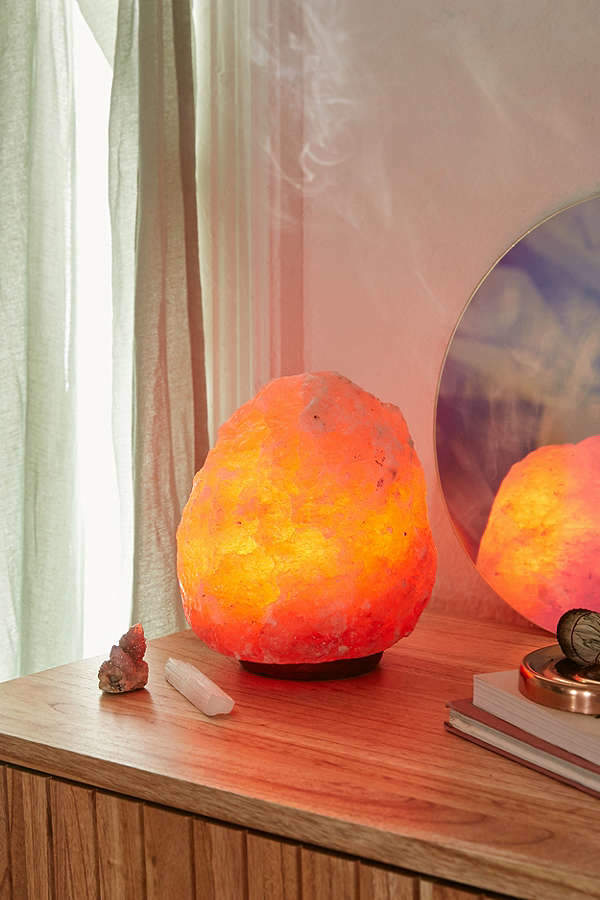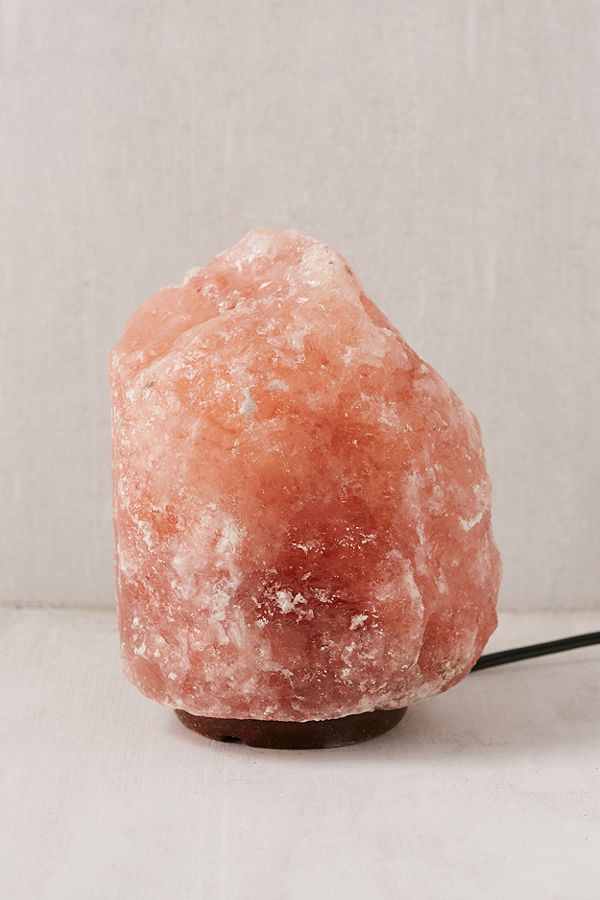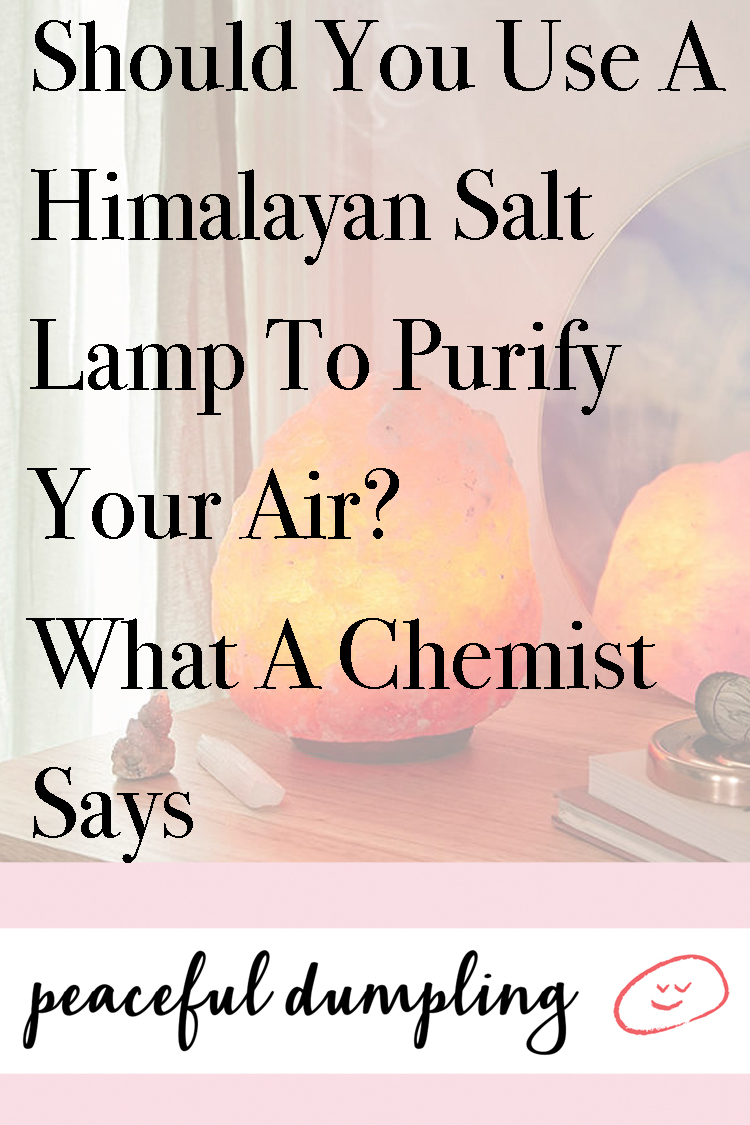Himalayan salt has become so mainstream that you don’t need to take a special trip to the health food store to stock up. Your average grocery is likely to have a decent supply—and you can even find the beloved pink salt hanging out in the suburban mecca that is TjMaxx.
I’ve already explored the potential beauty benefits of Himalayan salt and to quickly sum: it’s all a bit iffy, and you’ll probably be better off saving your beauty-budget for more tried-and-true ingredients like vitamin C, certain essential oils, non-comedogenic carrier oils, and exfoliating acids.
Part of me always holds out hope for alternative methods to offer real, science-backed benefits, however, so I began looking into Himalayan salt lamps with a very open mind. I spend a lot of time working at home on my devices, and I’m all too familiar with how copious hours on the computer can make you feel drained. I make an effort to balance that effect with a cozy office space—soft throws, candles, mugs of tea, I even have crystals (but just for looksies) …I wondered, could a salt lamp help with the ~vibes~?

Himalayan Salt Lamp—super cool looking, but does it work?
Are there any benefits to having a Himalayan salt lamp?
Perhaps the biggest selling point of the increasingly popular salt lamp is its alleged ability to boost the amount of negative ions in your air space—and negative ions receive a lot of buzz for good reason.
Negative ions are reported to have mood-enhancing effects by increasing the flow of oxygen to the brain while reducing fogginess. Pierce J. Howard, PhD (Center for Applied Cognitive Sciences in Charlotte, N.C.) adds,”They also may protect against germs in the air, resulting in decreased irritation due to inhaling various particles that make you sneeze, cough, or have a throat irritation.”
If you’ve stood by a waterfall, played in the ocean’s surf, or simply chillaxed under the running shower, you’re familiar with the mental clarity and “freshness” that accompanies exposure to negative ions. “The action of the pounding surf creates negative air ions and we also see it immediately after spring thunderstorms when people report lightened moods,” says ion researcher Michael Terman, PhD, of Columbia University.
The enemies of negative ions are, naturally, positive ions. As it turns out, our homes and places of work are often sources of positive ions thanks to our dependence on electronics. Electrical discharge produced by devices include positive ions and is a source of electronic smog, which according to the World Health Organization is “one of the most common and fastest growing environmental influences.” Additionally, air conditioning units deplete the air of negative ions and emit positive ions, Howard says. (Ugh!)
Although this information may make salt lamps seem extra enticing, they may not be the best source of negative ions, as a chemist explains. In fact, they may not be a source of negative ions at all.
“Salt is really stable, so you heat it up a little bit and nothing really happens,” explains John Malin, a retired chemist formerly with the American Chemical Society.
To dissociate two ions, he says, a salt lamp would need to reach up to 1,500 degrees Fahrenheit (yikes!). Clearly, that’s not happening or else those puppies would be major fire hazards.
Even if a salt lamp did generate negative ions, however, the science on the matter has yet to indicate that these negative ions would be anywhere near abundant enough to make a substantial impact on our health.
What about pollutants?
Many Himalayan salt lamp purveyors also claim that pollutants stick to the salt rather than remaining in the air where they can harm us. In theory, we’d be getting a great trade off—revitalizing negative ions in exchange for airborne pollutants. Unfortunately, this idea, too, is a bit far-fetched. “In terms of mass removal of pollutants from the air, I just don’t think it can happen,” Malin says, adding that even if the salt attracted pollutants to its surface, it would quickly run out of surface area.
Sigh.
The Bottom Line

Unfortunately, Himalayan salt lamps probably won’t save us from sick building syndrome or majorly raise our vibes in some dramatic way. They can be, however, quite pretty, and the soft, warm light they emit may be just what you need for your device-weary eyes. Plus, they’re a beautiful substitute for candles if you’re in a space where burning one would be inappropriate—so if you do have a salt lamp, enjoy it! Just be sure to take frequent breaks from your devices and step outside to get some real fresh air.

Do you have a Himalayan salt lamp? Do you feel that it affects your air space in any way?
Related: Miranda Kerr Swears *This* Gem Stone Is Essential To Her Skin. Let’s Investigate
Newsflash: Gluten-Free May Do More Harm Than Good, A Health Coach Explains
I Tried Acupuncture To Heal My Eczema–& Got Revelatory Insight Into My Whole Health
Get more like this—Subscribe to our daily inspirational newsletter for exclusive content!
__
Photo: Urban Outfitters
